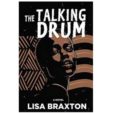This powerful and moving debut novel paints a bittersweet portrait of a community’s struggles against forces that threaten to destroy it and also the dreams–and, sometimes, the lives–of its residents. Equally compelling are the stories of individuals involved in or affected by these struggles. Sometimes, they are left to rely on little more than their own resilience and, against all odds, a sense of hope.
Set in the early seventies, in the dying factory town of Bellport, Massachusetts, the novel centers on a threat to a part of Bellport known as Petite Africa, once home to African Americans who migrated there from the South, and later populated by Africans and West Indians. (By the time of the novel, many earlier residents of Petite Africa had moved to a somewhat more expensive part of Bellport known as Liberty Hill, which also figures into the story.)
As the novel opens, residential properties and businesses in Petite Africa are slated to be taken by eminent domain so that the city can redevelop the area with a civic center and luxury apartments, among other things. At the same time, the neighborhood has become the target of multiple fires, possibly the result of arson by slumlords wanting to collect insurance payments before the city can take their property. These fires remain a constant threat to the lives and livelihoods of Petite Africa’s residents.
Braxton deftly weaves together the stories of people who are trying to realize their dreams in the face of these dangers. One of them is Omar Bassari, a talented drummer from Senegal, who hopes to succeed as a performer and recording artist and also open a drumming institute to nurture a new generation of drummers. Another is Omar’s Uncle Mustapha, whose Le Baobab restaurant has become both a fixture of Petite Africa and a draw to customers beyond the neighborhood. Mustapha also leads a long-shot effort to fight the city’s plans to take over and redevelop the neighborhood.
Additionally, Braxton explores the struggles and dreams of certain residents of the Liberty Hill section of Bellport, which managed to escape being taken by the city for redevelopment yet faces challenges of its own. Though opening a business there appears to be a risky proposition, this is a risk that one young couple, Sydney and Malachi Stallworth, is willing to take. A Victorian they purchase in the neighborhood becomes both their home and the site of their Talking Drum Bookstore and Cultural Center. As Malachi says to Sydney, “Every time people see the name [of the business], they’ll think of our African ancestors pounding on the drums to celebrate births, marriages, a call to war. Our Talking Drum is going to break it down for people, teach them about politics, economics, the Black Arts Movement.”
Yet the Talking Drum is more Malcahi’s dream than Sydney’s, and she’s put her goal of finishing law school on hold to help her husband get the business off the ground. (As a freelance photographer and journalist, she also becomes a pivotal part of bringing the troubles in Petite Africa to light.) Through the story of Sydney–and of Della Tolliver, a neighbor whose dreams of completing her education are undermined by her partner–the novel takes care to explore the possible costs of putting one’s aspirations on hold, and the risks of giving up on them entirely. Sydney’s and Della’s efforts to hold onto their dreams in the face of doubts and difficulties are inspiring, and they show the powers of persistence and resilience.
At one point, the novel takes a tragic turn, leaving Omar in particular with little more to rely on than resilience. In time, though, the larger community–which he’d connected to through his drumming and his Uncle Mustapha–makes it clear that he is not alone and that he has reasons for hope despite an uncertain future and the challenges that future will no doubt bring. Through this and other sections of the novel, Braxton presents powerful examinations of the strengths that communities can bring to individuals while never losing sight of the conflicts within communities and between them and other interests.
As a final note, two captivating whodunnits are woven into the novel: first, the question of who’s responsible for the fires endangering Petite Africa; second, who might be behind thefts of money and art at the Talking Drum. These mysteries make for compelling, and at times heartbreaking, reading.
In conclusion, The Talking Drum is a gripping, thought-provoking, and emotionally rich novel, one that I highly recommend.
Would My Pick be Your Pick?
If you're interested in ________, the answer may be "Yes":■ The challenges posed by urban redevelopment and gentrification
■ Issues of race, gender politics, and class
■ Struggles to save threatened communities

